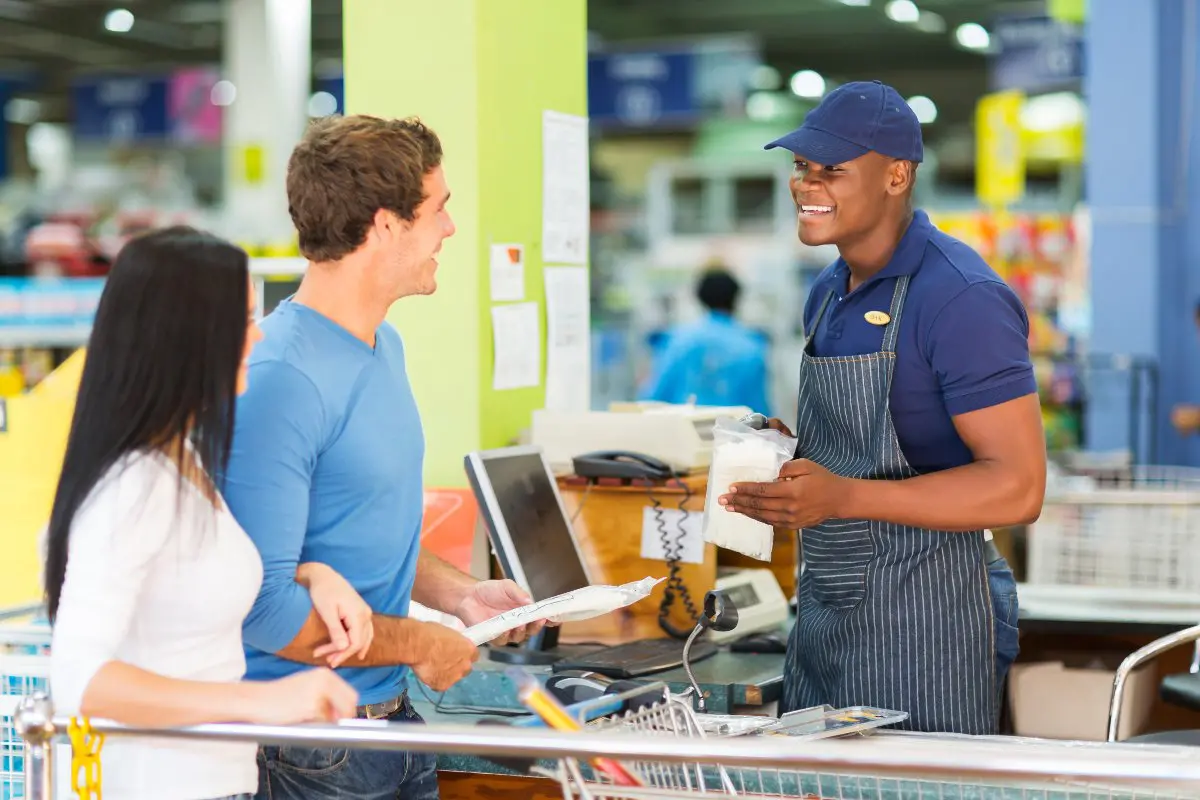One of the most difficult parts of sales is actually closing the sale. But once you’ve finally gotten a customer to say yes, why not continue selling to them? This is exactly what point-of-sale advertising does. Point-of-sale (or POS) advertising targets a customer during a purchase to encourage them to buy additional items.
What is Point-of-Sale Advertising?
Point-of-sale advertising is marketing to the customer during the checkout process. These sales are add-on sales to a purchase a customer has already decided to make. This type of advertising is typically used in brick-and-mortar stores but has also gained popularity with online retailers. Additional products and services are displayed to a customer while they are completing a purchase to drive additional sales.
Why Use Point-of-Sale Advertising?

Point-of-sale advertising is an easy way to drive more sales and boost your customer’s sales per visit. For instance, a customer who has already decided to make one purchase may be more likely to add on an additional item while going through the checkout process.
Additionally, in-store POS marketing can have the added benefit of keeping customers engaged and entertained while waiting in line. This can improve the customer’s overall experience, and a happy customer is likely to become a repeat customer.
Who Needs Point-of-Sale Advertising?
Retail stores of all kinds can benefit from point-of-sale advertising. For example, grocery stores utilize it by lining their checkout aisles with snacks and gum, and high-end boutiques do the same by decorating their cash wraps with jewelry displays.
But that’s not to say that only traditional retail stores can benefit from POS advertising. Other industries, such as the hospitality or automotive industries, can also use POS advertising to their advantage.
If you’ve ever booked a hotel room online, you’ve likely encountered a window during checkout asking if you’d like to add trip protection for an extra fee. Or when you’ve gotten your car’s oil changed, you’ve probably been asked if you would also like your air filter replaced.
Neither of these things is what you initially set out to purchase, but because the items are presented right as you are about to purchase something else, chances of agreeing are high.
This shows that no matter what you are selling, there is almost certainly a way to use point-of-sale advertising to your advantage.
POS vs. POP

Point-of-sale advertising takes place where the actual sales are being made. The customer has already decided to purchase a product when they are presented with POS advertising. Therefore, POS advertising is meant to generate additional sales.
Another example of this is when a customer goes to a fitness store to buy a yoga mat. She decides which mat to purchase, and while completing her purchase, she sees a display of hair ties at the register. She decides to buy them as well, even though she did not go to the store with any intention to buy hair ties.
Point-of-product (or POP) advertising, however, takes place earlier in the shopping process. In this same example, the customer goes to the store intending to buy a yoga mat, but while deciding which mat to purchase, she is presented with POP advertising. One mat may be on sale, or another may come with a voucher for a free yoga class, both of which can influence her decision.
Brand positioning strategies are important in POP advertising because they can boost sales on a particular brand, size, or style. In general, POP advertising aims to entice a customer to purchase a particular item rather than generate additional sales.
Best Practices of Point-of-Sale Advertising
POS marketing can be implemented in several forms, both in brick-and-mortar locations and online shops. These are a few common examples:
- End Caps and Display Stands
These are product displays placed in a customer’s line of sight on or around the checkout area and generally house low-cost items that a customer can easily justify as an impulse purchase.
- Dump Bins
Similar to end caps and display stands, large product bins are positioned near checkout lines filled with discounted items. These are usually arranged with the intention of moving clearance products.
- Sampling Areas

Typically done with food products, sampling tables can be strategically placed near registers as a form of POS advertising to entice customers to try and then buy.
- Product Suggestions
A great feature for online retailers to implement is product suggestions based on what the customer has added to their cart. These items can be complementary to what they are already buying (a pair of gloves to go with a hat, for example).
- Buy Now, Pay Later
Another great example of POS advertising is buy now, pay later POS financing software like Finturf. Online retailers utilize these services to encourage customers to complete their purchases and prevent abandoned carts. About 88% of online shopping carts are abandoned — meaning a customer adds items to their cart for purchase but never completes the payment.
If you offer customer financing at the point of sale, customers may be more likely to complete their purchases because they do not have to pay the entire total upfront. This is a POS financing solution that is beneficial for both the business and the customer. It ensures a sale for the business while also allowing customers flexible repayment options.
- Free Shipping

Offering free shipping when a customer hits a certain cart amount is a common version of online POS advertising that works quite effectively. Customers are more likely to spend their money on additional products to receive free shipping, even if the additional product is more than the price of shipping. This online practice works in-store as well when the purchased item is too big to fit in the shopper’s car.
Successful POS Advertising Examples
Major beauty retailer Sephora is a great example of successful POS advertising. The checkout line is decorated with shelves stocked with travel-sized products that customers can happily peruse while waiting their turn. However, Sephora’s POS advertising is particularly smart because this section tends to house smaller (and thus lower-priced) versions of high-end products, which can serve to drive additional and repeat sales.
For example, a customer may have seen a $75 face cream while shopping in the store and been interested in the product but did not want to commit to the high price. Later on, they see a $25 travel size of the same cream and decide to purchase.
As a result of point-of-sale advertising, the customer purchased an item they had initially decided against. This can also potentially result in a repeat customer who comes back to buy the full size after trying the travel size.
Conclusion
A customer who has already agreed to make a purchase from your company may be likely to make an additional one. Hence, point-of-sale advertising may be a smart strategy to implement. Brick and mortar shops can utilize display stands and sampling areas as POS advertising, and online retailers can offer related item suggestions and free shipping. When done successfully, your business may be able to increase sales and generate repeat customers. Incorporating diverse types of products within the point-of-sale setup can further entice customers to make additional purchases.


